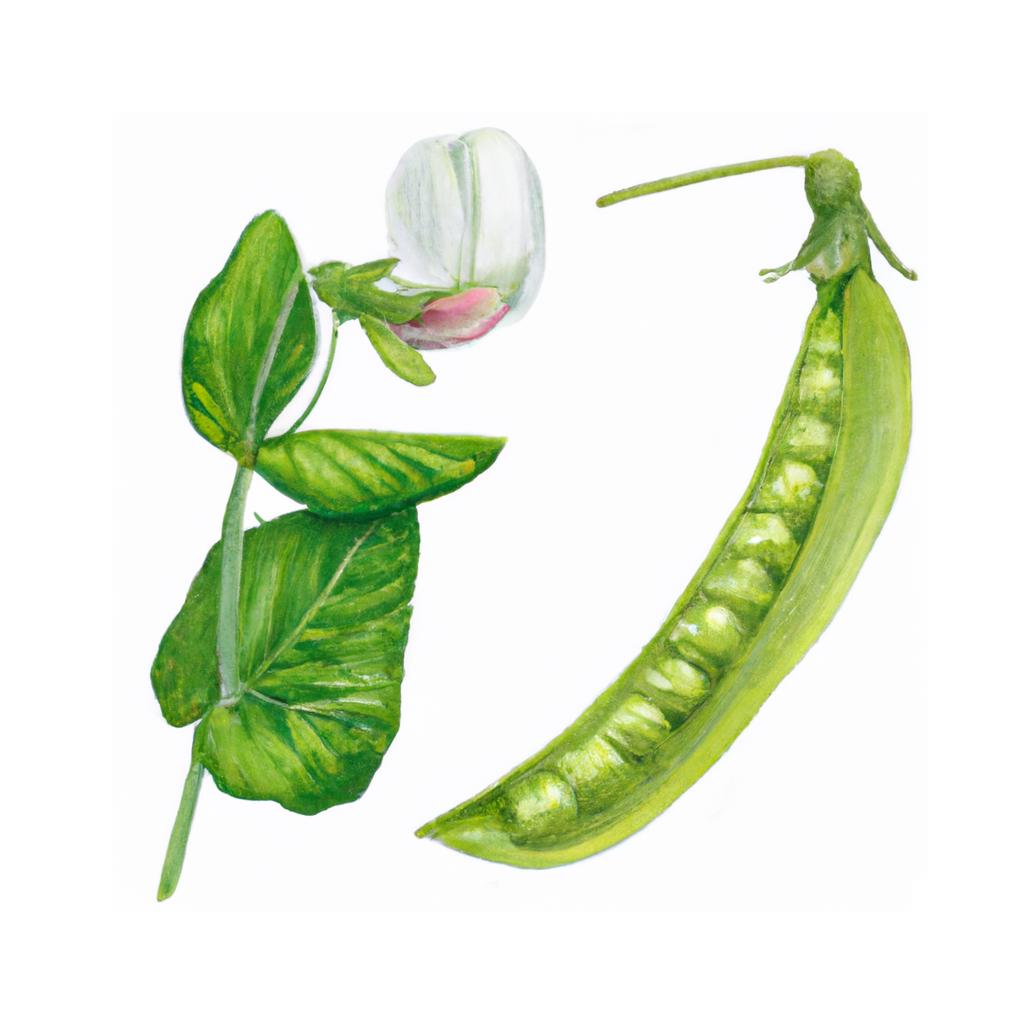
Sugar snap peas, also known as Pisum sativum var. macrocarpon, are a delightfully sweet and crunchy vegetable that originated as a cross between English peas and snow peas. They were first developed in the 1970s by Dr. Calvin Lamborn, an American plant breeder, and have since become a popular favorite among gardeners and chefs alike.
One of the unique features of sugar snap peas is that the entire pod is edible, with no need to shell the peas inside. The pods are plump and tender, while the peas within are succulent and full of natural sugars. This makes them perfect for eating raw, steaming, or stir-frying, and they pair deliciously with other vegetables, cooked meats, fish, and tofu.
Sugar snap peas are highly nutritious, packing a significant dose of vitamins A, C, and K, folate, fiber, and iron. They are also low in calories, making them an ideal choice for a healthy and satisfying snack.
When growing sugar snap peas in your garden, it's important to provide them with support such as a trellis, as they grow into vines up to six feet tall. They thrive in cooler weather and can be planted early in the spring and again in late summer to enjoy a bountiful harvest during their short, but productive, growing season.
Some popular dishes featuring sugar snap peas include stir-fries, salads, and pasta dishes. Their sweet, slightly grassy flavor pairs well with ingredients such as garlic, ginger, soy sauce, lemon, and various herbs. Whether eaten raw or cooked, sugar snap peas are a versatile and delicious addition to any meal.
This is advice is most applicable to growers in the UK, you may need to adjust the timings if you live somewhere with a different climate and/or seasons.
| Month | Tasks | Advice |
|---|---|---|
| January | - | - |
| February | Start seeds indoors, | Sow sugar snap pea seeds indoors in pots or trays with a good quality seed compost. Place them in a cool but frost-free location. |
| March | Transplant seedlings outdoors, Sow seeds outdoors, | You can transplant your indoor-grown seedlings or directly sow seeds outdoors. Install supports for the plants to climb as they grow. |
| April | Provide support, | Ensure that your sugar snap peas have adequate support to climb as they grow. Check that the supports are secure and tie in any new growth as needed. |
| May | Water regularly, | Keep the soil consistently moist, especially during flowering and pod development. Water regularly, especially during dry spells. |
| June | Harvest, | Begin harvesting sugar snap peas when the pods have filled out and are plump but still tender. Regularly pick pods to encourage further production. |
| July | Harvest, | Continue harvesting sugar snap peas. If production slows, consider sowing a second crop for a fall harvest. |
| August | Start a second crop indoors, | For a fall harvest, start a second crop of sugar snap peas indoors in pots or trays. Transplant outdoors in September. |
| September | Transplant second crop outdoors, Sow seeds outdoors for overwintering, | Transplant your second crop outdoors and provide support for the plants to climb. You can also sow seeds outdoors for overwintering if you have a mild climate. |
| October | Harvest second crop, | Harvest your second crop of sugar snap peas as they mature. Pick pods regularly to encourage further production. |
| November | - | - |
| December | - | - |